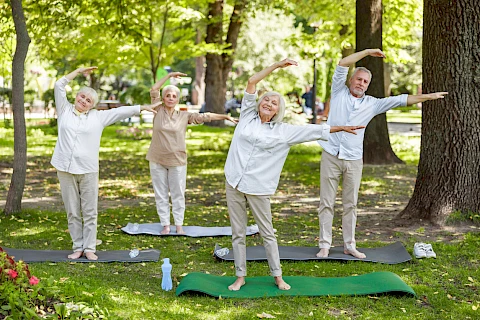
As the temperature drops, it's not just the change in seasons that makes a difference—cooler weather can also cause joint pain to worsen, especially for seniors, who may suffer from a variety of conditions that increase the risk of pain. Joint discomfort can significantly impact daily life, making it hard to stay active and enjoy your favorite activities. Living in Miami and the surrounding areas, you might not experience extreme cold, but even a slight dip in temperature can make a difference. Managing joint pain effectively is essential for maintaining quality of life.
The Link Between Cooler Weather and Joint Pain
When the weather gets cooler, it's common for joint pain to flare up. There are a few reasons for this: Lower temperatures can cause muscles and joints to stiffen. Changes in barometric pressure may cause swelling in the joints. Cooler weather might lead to less physical activity, making joints stiffer. Seniors often experience symptoms like increased pain, reduced range of motion, and more stiffness during the fall season. Understanding these symptoms helps you better manage them.
Staying Active
Keeping active is crucial for joint health. Regular physical activity helps maintain flexibility and reduces stiffness. Some low-impact exercises suitable for seniors include walking, swimming, and Tai Chi. Walking is a gentle way to stay active without putting too much strain on the joints. Swimming provides a full-body workout with minimal impact on the joints. Tai Chi improves balance and flexibility through slow, controlled movements. Incorporate exercise into your daily routine by setting small, achievable goals, like short walks after meals or light stretching in the morning.
However, before starting a new exercise routine, consult your doctor. Your care provider can make sure that any exercises you're trying are suitable for your ongoing needs.
Using Heat Therapy
Heat therapy is an effective way to relieve joint pain. It increases blood flow to the affected area, promoting healing and easing muscle tension around the joint. Different methods to apply heat include heating pads, warm baths, and warm towels. Heating pads are easy to use and effective for localized pain. Soaking in a warm bath can soothe multiple joints simultaneously. A simple method is to heat a towel and apply it to the sore area. Make sure to follow safety precautions, like not using heat therapy for more than 20 minutes at a time and avoiding too-high temperatures.
Dressing Warmly
Keeping your joints warm in cooler weather is crucial. Wear layers to trap heat and allow for easy adjustment. Opt for thermal wear, sweaters, and comfortable warm pants. Don't forget accessories like gloves, scarves, and warm hats, which can make a big difference. Layer your clothing to maintain warmth without restricting movement, ensuring comfort and flexibility throughout the day.
Adjusting Daily Routines
Sometimes, small changes in your daily routine can make a big difference in managing joint pain. Modify tasks by breaking down activities into smaller, manageable steps to reduce strain. Make ergonomic adjustments by using tools or furniture designed to reduce stress on joints, like ergonomic chairs or kitchen tools. Prioritize rest by ensuring you're getting enough sleep and taking breaks throughout the day. Making these adjustments can help ease joint pain and improve your daily comfort.
Staying Hydrated and Eating Well
Good hydration and nutrition are fundamental for joint health. Water helps keep joints lubricated and functioning efficiently. Certain foods can reduce inflammation and support joint health. Include omega-3 rich foods like fish and flaxseeds in your diet. Eat antioxidant-rich fruits and vegetables such as berries and leafy greens. Avoid processed foods as they can increase inflammation. Consulting a nutritionist can help you create a diet plan tailored to your needs.
Seeking Professional Help
Sometimes managing joint pain requires professional help. Here's when to consult a healthcare provider:
- Persistent or severe pain
- Sudden increase in symptoms
- Difficulty performing daily activities
Your care provider can offer the best recommendations for your specific ailments, making it easier for you to maintain quality of life despite joint pain.
Help for Seniors with Joint Pain
Managing joint pain in cooler weather includes staying active, using heat therapy, dressing warmly, adjusting daily routines, staying hydrated, and eating well. By taking these proactive steps, seniors can enjoy a more comfortable and active life even when the weather changes. If you need personalized support at home to make your life easier, contact Senior Helpers South Miami & Kendall for care services in Coconut Grove, Pinecrest, Palmetto Bay, Miami Beach, Homestead, and Ke.